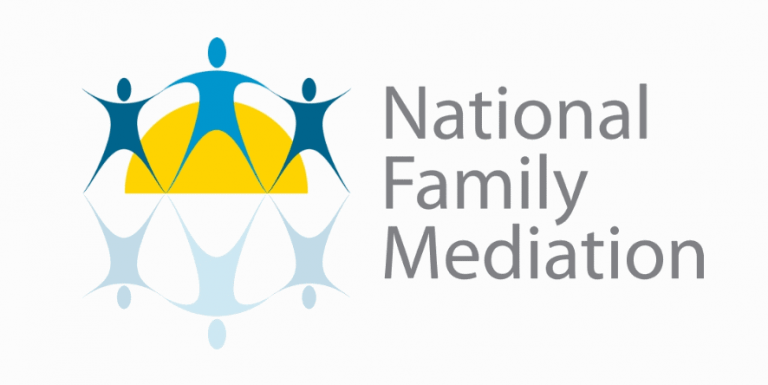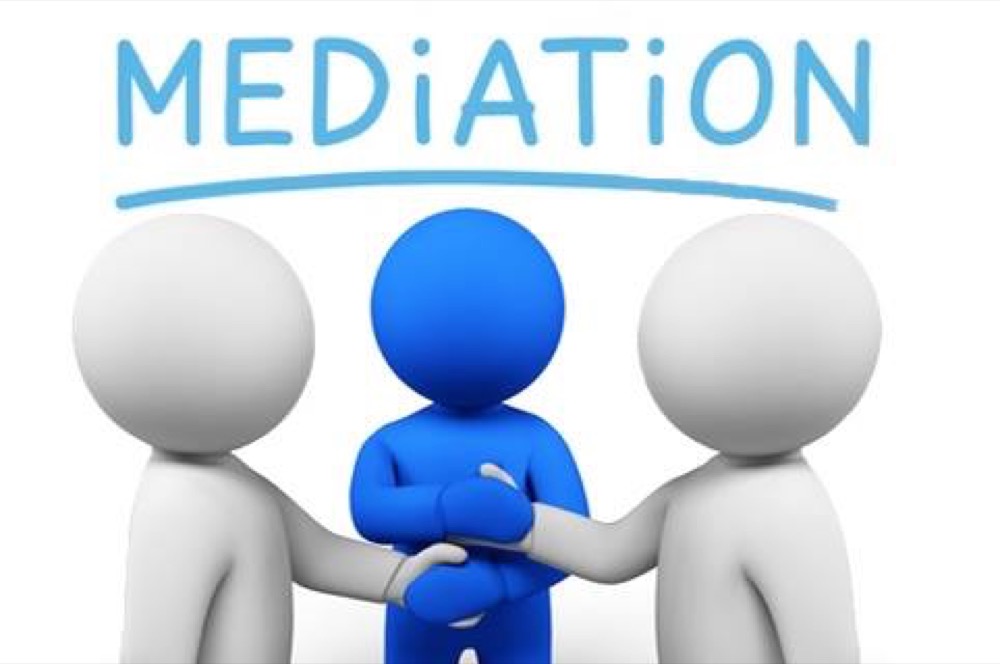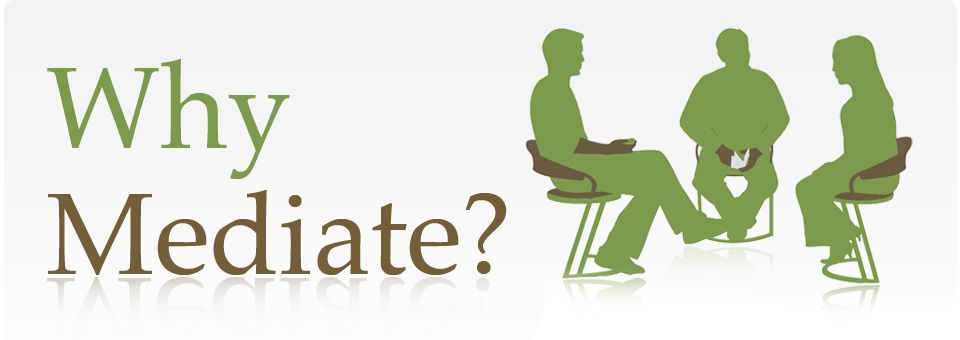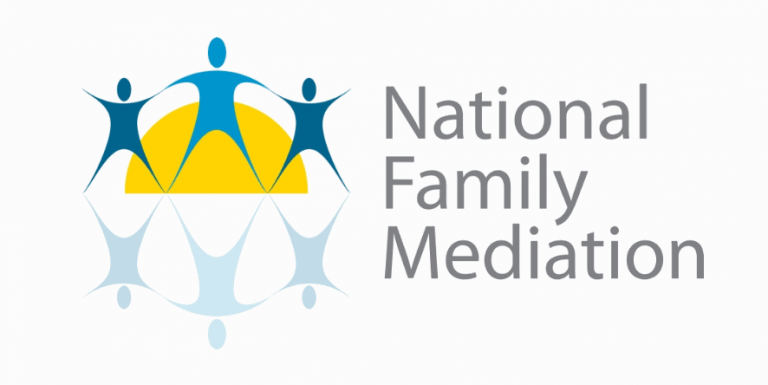
A New Look for the Family Mediation Service
A new look for the family mediation service is more than just a fresh coat of paint; it’s a complete transformation designed to better serve families navigating difficult times. We’re talking a revitalized brand identity, a user-friendly website overhaul, and enhanced communication strategies – all aimed at creating a more supportive and effective experience for everyone involved. This isn’t just about aesthetics; it’s about building trust and making a real difference.
From a redesigned logo that speaks to empathy and professionalism to a completely revamped website offering intuitive navigation and easily accessible information, we’ve tackled every aspect of the service to ensure it meets the evolving needs of our clients. We’ve also implemented new marketing and outreach strategies to reach a wider audience, and invested in comprehensive staff training to enhance their skills in conflict resolution and communication.
The goal? To create a truly welcoming and supportive environment where families can find resolution and move forward.
Rebranding the Family Mediation Service
Giving a family mediation service a fresh new look is more than just a cosmetic change; it’s about reflecting the core values of empathy, professionalism, and trust, ultimately attracting more clients and strengthening the service’s reputation. A successful rebrand communicates the service’s commitment to helping families navigate difficult situations with understanding and support.
Logo Design for Trust, Empathy, and Professionalism
The new logo should visually represent the essence of the family mediation service. Imagine a logo incorporating a stylized family silhouette, perhaps subtly interconnected, using soft, rounded lines to convey gentleness and unity. The font should be clean, modern, and easily legible, projecting professionalism without appearing cold or distant. The overall aesthetic should be calming and inviting, suggesting a safe space for open communication and resolution.
A simple, yet elegant design is key to memorability and broad appeal. For example, a successful logo might use a subtle color gradient to suggest growth and progress, subtly hinting at the transformative potential of mediation.
Tagline Development
A concise and memorable tagline is crucial for brand recognition. Instead of a lengthy phrase, consider something short and impactful. Options like “Bridging the Gap,” “Restoring Harmony,” or “Families First: Mediation Solutions” communicate the service’s purpose clearly and effectively. These taglines emphasize the positive outcomes of mediation and the service’s dedication to family well-being. A strong tagline should resonate emotionally with potential clients, providing a quick and clear understanding of the service offered.
Brand Color Palette, A new look for the family mediation service
The choice of colors significantly impacts the perceived brand personality. A calming and approachable color palette is essential for a family mediation service. Consider a base of soft blues and greens, representing tranquility and peace. Accents of warm neutrals, such as creams or light browns, can add a sense of comfort and approachability. Avoiding overly bright or jarring colors is key; the goal is to create a feeling of safety and trust.
For instance, a palette incorporating a calming sky blue, a gentle sage green, and a warm off-white would create a visually appealing and emotionally resonant brand identity.
Examples of Successful Rebranding Campaigns
Analyzing successful rebranding campaigns in similar fields can provide valuable insights. Consider the rebranding of a well-known mental health organization that transitioned from a clinical, institutional image to a more human-centered and approachable brand. They accomplished this by using softer colors, more approachable imagery (featuring diverse families in comfortable settings), and a tagline that focused on hope and recovery rather than solely on the clinical aspects of their services.
Similarly, a successful law firm specializing in family law might have moved away from a formal, corporate look to one that was more friendly and empathetic, highlighting the human element of their work. These examples demonstrate the power of strategic rebranding to create a more positive and impactful brand image.
Website Redesign for Improved User Experience

Source: slimglaze.com
Our old website, while functional, lacked the modern design and intuitive navigation needed to effectively serve our clients. The redesign focuses on creating a user-friendly experience that’s both accessible and engaging, ultimately making it easier for families to find the support they need during challenging times. This will involve a complete overhaul of the site’s structure, design, and content.We’ve undertaken a significant website redesign to improve the user experience and make it easier for families to access our services.
The goal is to create a clear, concise, and visually appealing website that is easily navigable across all devices. This includes reorganizing content, improving the interface, and creating compelling copy that highlights the benefits of family mediation.
We’re thrilled to announce a fresh new look for the Family Mediation Service website! We’re working hard to make information more accessible, and to reach a wider audience, which is why we’ve also been focusing on our online presence – check out our guide on getting it on with youtube for tips on boosting your video marketing.
This new strategy will help us better connect with families needing our support, all thanks to this exciting new website design.
Website Structure and Navigation
The previous website structure was somewhat confusing, with information scattered across various pages. The new structure organizes content into logical sections, making it easier for users to find what they need quickly. Below is a comparison of the old and new site structures:
| Old Structure | New Structure |
|---|---|
| Home, About Us, Services (single page with lengthy text), Contact | Home, About Us, Services (separate pages for each service type), Mediation Process, FAQs, Resources, Testimonials, Contact |
| Cluttered navigation bar, inconsistent page layouts | Clean, intuitive navigation menu, consistent page design across the site |
| Limited search functionality | Improved search functionality with filtering |
User Interface and Accessibility
The redesigned website prioritizes user-friendliness and accessibility. We’ve implemented a responsive design that adapts seamlessly to various screen sizes (desktops, tablets, and smartphones). The site is designed to meet WCAG (Web Content Accessibility Guidelines) standards, ensuring accessibility for users with disabilities. This includes features such as keyboard navigation, screen reader compatibility, and sufficient color contrast.
Website Copy and Messaging
The website copy has been rewritten to be more concise, engaging, and informative. We focus on highlighting the benefits of family mediation, such as reducing conflict, promoting cooperation, and protecting children’s well-being. The language used is empathetic and reassuring, acknowledging the emotional challenges families face. For example, instead of using technical jargon, we use clear and simple language that everyone can understand.
We’ve also incorporated client testimonials to build trust and credibility.
Visual Elements and Engagement
Visuals play a crucial role in enhancing user engagement and conveying the message effectively. We’ve incorporated high-quality images and videos to make the website more appealing and informative.Image 1: A diverse group of families smiling and shaking hands in a comfortable, welcoming office setting. The image conveys a sense of hope, collaboration, and positive outcomes achieved through mediation. The warm lighting and relaxed body language of the individuals depicted emphasize the supportive and non-confrontational nature of the service.Image 2: A close-up shot of a mediator’s hands gently gesturing, conveying empathy and understanding.
This image focuses on the human element of the mediation process, highlighting the mediator’s role in facilitating communication and finding solutions. The soft lighting and focus on the hands create a sense of calm and trust.Image 3: A short video showcasing a brief, positive client testimonial. This video adds a personal touch, building trust and demonstrating the real-world impact of the service.
The video uses natural lighting and avoids overly staged settings, contributing to an authentic and relatable experience.
Marketing and Outreach Strategies
Revamping our family mediation service requires a robust marketing strategy to reach those who need our help. We need to move beyond simply having a website; we need to actively engage potential clients and build trust within the community. This involves carefully considering our target audience and tailoring our messaging to resonate with their needs and concerns.Our success hinges on effectively communicating the value of family mediation and overcoming the common misconceptions surrounding it.
Many families are unaware of the benefits or believe mediation is too confrontational. Our marketing efforts must address these concerns head-on, showcasing the positive aspects of resolving disputes through mediation.
Social Media Strategy for Target Audiences
Reaching our target audiences—families facing conflict, legal professionals, and social workers—requires a multi-platform social media strategy. Facebook remains a strong platform for reaching a broad demographic, allowing for detailed posts and community engagement. Instagram, with its visual focus, can showcase the supportive and collaborative nature of mediation. We’ll use targeted advertising on both platforms, focusing on geographic location, demographics, and interests related to family law and conflict resolution.
For example, Facebook ads can target parents within specific age ranges experiencing separation or divorce, while Instagram can visually highlight success stories and testimonials.
Engaging Social Media Content
Content creation is key. We will create a content calendar featuring a mix of formats. Informative posts will address common concerns and explain the mediation process. For instance, a Facebook post could explain the difference between mediation and litigation, highlighting the benefits of a less adversarial approach. Instagram will feature short videos and visually appealing infographics explaining the steps involved in family mediation.
We’ll also share client testimonials (with their permission, of course!), showcasing positive outcomes and building trust. Finally, we’ll incorporate interactive elements like polls and Q&A sessions to foster engagement.
Design of Marketing Materials
Our brochures and flyers will reflect our rebranded image, utilizing a calming and approachable color palette. The design will prioritize clear, concise language, focusing on the benefits of mediation: reduced stress, cost savings, and improved family relationships. Brochures will provide detailed information about our services, including our mediators’ qualifications and experience. Flyers will offer a more concise overview, including a clear call to action (e.g., “Call us today for a free consultation”).
We’ll ensure the materials are accessible to individuals with varying literacy levels and language needs.
Comparison of Marketing Channels
We will track the effectiveness of different marketing channels using analytics tools provided by each platform. This will allow us to measure website traffic originating from social media, assess the reach of our posts and ads, and monitor conversion rates (e.g., calls, email inquiries, website form submissions). By comparing these metrics across platforms, we can optimize our strategy, allocating resources to the most effective channels.
For example, if Instagram proves more effective at driving website traffic than Facebook, we will adjust our budget accordingly, perhaps shifting resources to create more Instagram-specific content. We’ll also explore collaborations with local organizations and professionals who work with families facing conflict, such as social workers and legal aid providers. This could involve guest blog posts, joint webinars, or cross-promotion on each other’s platforms.
Improving Client Communication and Service Delivery

Source: cloudinary.com
Revamping our client communication and service delivery is crucial for enhancing the overall mediation experience. A streamlined, efficient, and empathetic approach will build trust and foster positive outcomes. This involves a multifaceted strategy focusing on appointment scheduling, information management, regular updates, and consistent communication templates.
Effective communication is the cornerstone of successful mediation. Clear, concise, and timely information exchange reduces client anxiety and promotes a collaborative environment. By implementing the following strategies, we aim to create a positive and supportive experience for every client.
Appointment Scheduling and Client Information Management
We will implement an online booking system integrated with our client database. This system will allow clients to easily schedule appointments at their convenience, eliminating phone tag and reducing administrative overhead. The database will securely store all client information, including contact details, case specifics, and appointment history. Access will be strictly controlled to maintain confidentiality. This system will also send automated reminders and confirmations, reducing missed appointments and improving efficiency.
Providing Regular Updates to Clients
Maintaining consistent communication throughout the mediation process is vital. We will establish a system of regular updates, tailored to the specific stage of mediation. These updates will be delivered via email and, where appropriate, phone calls. For example, after an initial consultation, clients will receive a summary email outlining next steps and key deadlines. Following each mediation session, clients will receive a brief summary of the discussion and any agreed-upon actions.
Email Communication Templates
Standardized email templates will ensure consistency and professionalism in our communications. These templates will include subject lines clearly indicating the email’s purpose (e.g., “Mediation Appointment Confirmation,” “Post-Session Summary,” “Important Update Regarding Your Case”). The body of the emails will be concise, using plain language, and avoid legal jargon. They will also include contact information for any questions or concerns.
For example, a post-session summary might include bullet points summarizing key agreements reached, any outstanding issues, and the date of the next session.
Examples of Effective Client Communication Strategies
Many successful mediation services utilize client portals to provide secure access to case documents and updates. Others leverage text message reminders for appointments and updates, providing convenient and readily accessible communication. Some services also offer regular check-in calls to address any concerns or questions proactively. By observing and adapting successful strategies from other established services, we can further enhance our own communication protocols.
For instance, a family mediation service in California utilizes a client portal which allows clients to upload documents, view session summaries, and communicate securely with their mediator. This system has significantly reduced administrative burden and increased client satisfaction.
Training and Staff Development
Investing in our mediation staff is paramount to ensuring the continued success and high quality of our family mediation service. A well-trained team is better equipped to handle complex family situations with sensitivity, skill, and effectiveness, ultimately leading to improved outcomes for the families we serve. This section Artikels a comprehensive training and development plan designed to equip our staff with the necessary skills and knowledge.
Our training program will focus on three core areas: communication, conflict resolution, and empathy. These skills are essential for effective mediation, allowing our staff to navigate difficult conversations, facilitate constructive dialogue, and understand the emotional perspectives of all parties involved. The program will utilize a blended learning approach, combining interactive workshops, online modules, and practical case studies to provide a comprehensive and engaging learning experience.
Key Skills and Training Needs for Mediation Staff
Identifying specific training needs is crucial for effective staff development. We’ll assess existing skills through surveys, performance reviews, and observation, focusing on areas such as active listening, non-violent communication, negotiation techniques, and understanding family dynamics. This assessment will inform the design of targeted training modules. For example, if a gap is identified in handling high-conflict situations, a specific module will be developed focusing on de-escalation techniques and managing emotional outbursts.
Similarly, if the team needs to improve their understanding of child psychology, relevant training will be provided.
Communication Skills Training
Effective communication is the cornerstone of successful mediation. This module will cover various communication styles, active listening techniques, and strategies for clear and concise articulation. We will utilize role-playing exercises to simulate real-life mediation scenarios, allowing staff to practice their skills in a safe and supportive environment. The training will also emphasize the importance of non-verbal communication and adapting communication styles to suit individual needs.
For instance, staff will learn how to modify their approach when communicating with individuals experiencing high levels of stress or emotional distress. The curriculum will include materials on understanding and addressing communication barriers such as cultural differences or language difficulties.
Conflict Resolution Training
This module will equip staff with advanced conflict resolution strategies. We’ll explore various mediation models and techniques, including interest-based negotiation, transformative mediation, and narrative mediation. Participants will learn how to identify underlying interests and needs, facilitate collaborative problem-solving, and develop mutually acceptable agreements. Practical exercises will involve analyzing case studies and developing tailored conflict resolution plans. A specific focus will be placed on developing skills in managing power imbalances and ensuring equitable outcomes for all parties involved.
For example, staff will learn techniques to effectively address situations where one party holds significantly more power than the other.
Empathy Training
Developing empathy is crucial for building rapport and trust with clients. This module will focus on understanding and responding to the emotional needs of individuals experiencing family conflict. We’ll utilize various techniques to enhance emotional intelligence, including perspective-taking exercises and mindfulness practices. Staff will learn to identify and manage their own emotional responses while effectively supporting clients through challenging situations.
The training will explore the impact of trauma and adverse childhood experiences on individuals involved in family disputes, equipping staff to approach each case with sensitivity and understanding. This could involve case studies illustrating how trauma affects communication and negotiation styles.
Ongoing Professional Development
Continuous learning is vital for maintaining high professional standards. We will establish a system for ongoing professional development, providing access to relevant conferences, workshops, and online resources. Staff will be encouraged to participate in continuing education programs and share their learnings with the team. Regular supervision sessions will provide opportunities for reflection, peer support, and professional growth. We will also establish a mentorship program, pairing experienced mediators with newer staff members to facilitate knowledge transfer and skill development.
This ongoing professional development will be tracked and documented, ensuring that staff receive regular updates and maintain their expertise in the field of family mediation.
Training Schedule and Resources
A detailed training schedule will be developed and communicated to all staff. The schedule will Artikel the training modules, dates, times, and locations. We will utilize a variety of resources, including online learning platforms, workbooks, and access to relevant professional journals and publications. A dedicated training budget will be allocated to cover the costs of training materials, external trainers, and conference attendance.
We will also create a centralized repository of training materials and resources, ensuring easy access for all staff. This repository will be regularly updated to reflect the latest best practices and research in the field of family mediation.
Ultimate Conclusion: A New Look For The Family Mediation Service

Source: calmmediation.org
Ultimately, this “new look” represents a commitment to providing the highest quality family mediation services. By focusing on a more accessible and empathetic approach, we aim to empower families to navigate conflict constructively and reach mutually beneficial agreements. We believe these improvements will not only enhance the client experience but also strengthen the overall effectiveness of our service.
We’re excited about the positive impact this transformation will have on the families we serve and look forward to continuing to evolve and improve.
Q&A
What makes this rebranding different?
This isn’t just a superficial change; it’s a holistic approach incorporating website improvements, enhanced communication, and staff training to fundamentally improve the client experience.
How will the new website improve my experience?
The redesigned website will be more intuitive, mobile-friendly, and offer clear, concise information about our services, making it easier to find the help you need.
Will the cost of the service change?
No, the cost of our services will remain the same. This rebranding is focused on improving the quality and accessibility of our services, not increasing fees.
What kind of training have staff received?
Staff have received training in advanced communication techniques, conflict resolution strategies, and empathy building to better support families during mediation.
